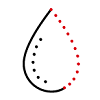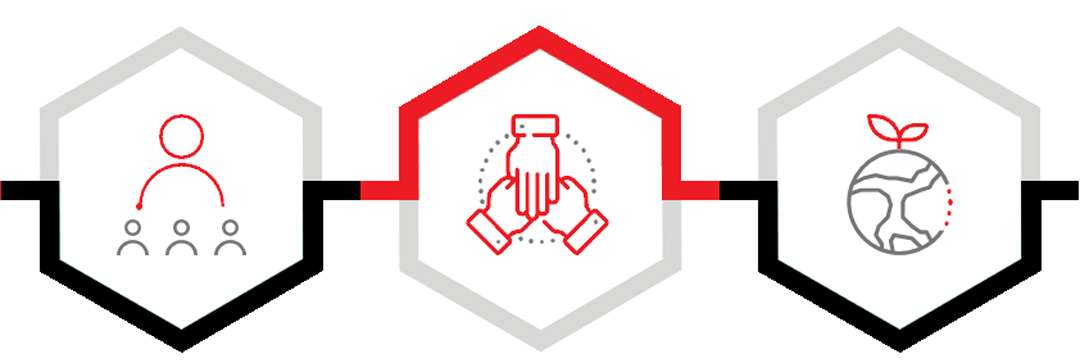Decode the Circular Economy and REthink the future
Transitioning to the Circular Economy is critical to ease demand on our planet’s natural resources and deliver sustainable economic growth. Regenerative by design, the Circular Economy minimises waste while providing a new world of opportunity for investors where preservation drives prosperity.
HSBC Asset Management is decoding the Circular Economy to enable investors to rethink their investments and become part of the solution. As part of this move forward, we have launched our HSBC GIF Global Equity Circular Economy fund.
What is a Circular Economy?
The demand on our planet’s natural resources is unsustainable.
Feeding into a global desire for positive change, the Circular Economy helps conserve and optimize finite resources while opening up investment opportunities and delivering sustainable economic growth.
Circular economy
Why should we act now?
*Data as at April 2020. Source: Message for Earth Day 2020
Current linear model: take, make, use, waste

|
|
Exhaustion of natural resources and water pollution
|
|
|
Soaring CO2 emissions and waste
|
|
|
Deterioration of Biodiversity and living conditions
|
Society is increasingly embracing the circular economy transition
Regulations and Governments worldwide are moving fast forward on Circular Economy
|
Society calls for action…
|
More investors and companies are looking into circular economy integration
|
1: January 2022, Visualized: The Circular Economy 101
2: June 2019, Plastic pollution facts and information
3: June 2022, Climate Change - United Nations Sustainable Development
4: May 2022, Waste and recycling
*IPCC = Intergovernmental Panel on Climate Change, **KPIs = Key Performance Indicators Source: HSBC Asset Management. June 2022. The commentary and analysis presented in this document reflect the opinion of HSBC Asset Management on the markets, according to the information available to date. They do not constitute any kind of commitment from HSBC Asset Management.
Circular Economy helps resolve the world’s most pressing challenges
Circular Economy delivers on several UN Sustainable Goals, especially:
Goal 12: Responsible Consumption and Production
Every second, the equivalent of a rubbish truck load of clothes is burnt or buried in landfill.
 In a circular economy for fashion, products are used more, made from safe and recycled or renewable inputs, “made to be remade”, recycled or composted. Hazardous substances to health or the environment are designed out3.
In a circular economy for fashion, products are used more, made from safe and recycled or renewable inputs, “made to be remade”, recycled or composted. Hazardous substances to health or the environment are designed out3.Goal 6: Clean Water & Sanitation
72 per cent of all water withdrawals are used by agriculture4. The most impacted regions (West Asia, Pacific) export scarce water through food and cotton products to net importers like Europe and North America.
 Efficient textile and food production means massive decrease in water stress in Asia.
Efficient textile and food production means massive decrease in water stress in Asia.
1: January 2022, Visualized: The Circular Economy 101
2: The Global Circularity Report 2021
3: Source: Fashion and a circular economy | Ellen MacArthur Foundation
4: February 2021, Scarcity | UN-Water
Source: HSBC Asset Management, June 2022. The commentary and analysis presented in this document reflect the opinion of HSBC Asset Management on the markets, according to the information available to date. They do not constitute any kind of commitment from HSBC Asset Management.
Hear from our expert
Bénédicte Mougeot, Portfolio Manager and Head of Climate Equity
Getting to know the Circular Economy
An opportunity for investors
Investing in solutions to the long-term sustainability challenges we face offers an added benefit for those who want their capital to contribute to improved outcomes beyond investment returns.
Companies
|
|
|
* ROCE = Return on capital employed
Customers
|
|
|
Society
|
|
|
Key Risks and Risk Indicators
The value of investments and any income from them can go down as well as up and investors may not get back the amount originally invested.
- Capital loss risk: There is no guarantee of capital preservation
- Equity risk: Stock market investments may be affected by general market conditions
- Small and mid-cap risk: These securities may be more volatile and less liquid than larger-cap equities
- Foreign exchange risk: Currency fluctuations may affect investment value
- Emerging markets risk: these markets may involve higher risk, reduced liquidity and less regulation
- ESG (Sustainability) risk: Environmental, social or governance factors could adversely impact the value of investments
Summary Risk Indicator (SRI)
The fund’s SRI is 4 out of 7, indicating a medium to high level of risk. This measure reflects market and credit risk. Historical data is not a reliable indicator of future performance. The rating is not guaranteed and may change over time. A lower SRI does not mean a risk-free investment.
Important information
Further information on risks is available in the Key Information Document (KID) and the Prospectus or Offering Memorandum. Investors should review these documents carefully before making investment decisions.
Summary Risk Indicator (SRI) = 4 out of 7

The SRI (Summary Risk Indicator) is an overall indicator of the product risk level resulting from the combination of market risk and credit risk. The scale varies from 1 (least risky) to 7 (most risky). Historical data may not be a reliable indication for the future. The rating is not guaranteed to remain unchanged and the categorisation may shift over time. The lowest rating does not mean a risk-free investment. Do not run any unnecessary risk. Read the Key Investor Information Document.
The fund has a high risk indicator. The value of investments can go up as well as down.
Today, we and many of our customers contribute to greenhouse gas emissions. This is why HSBC Asset Management, together with other asset managers, have an important role to play in supporting the transition to a net zero economy. Step by step, we are developing strategies to reduce our own emissions and to help our customers reduce theirs. For more information visit https://www.assetmanagement.hsbc.com/about-us/net-zero
The value of investments and any income from them can go down as well as up and investors may not get back the amount originally invested. Past performance is not a reliable indicator of future results. Any forecasts, projections or targets are provided for illustrative purposes only and are not guaranteed. We accept no liability for any failure to meet such a forecast, projection or target.
This document has been prepared for general information purposes only and does not constitute investment advice or take into account the specific investment objectives, financial situation or particular needs of any person.
This is not an offering document and should not be construed as a recommendation or solicitation to buy or sell any investment.
The content is intended for professional investors only and should not be distributed to or relied upon by retail clients.
Further information can be found in the relevant Key Information Document (KID), Prospectus, or Offering Memorandum.











